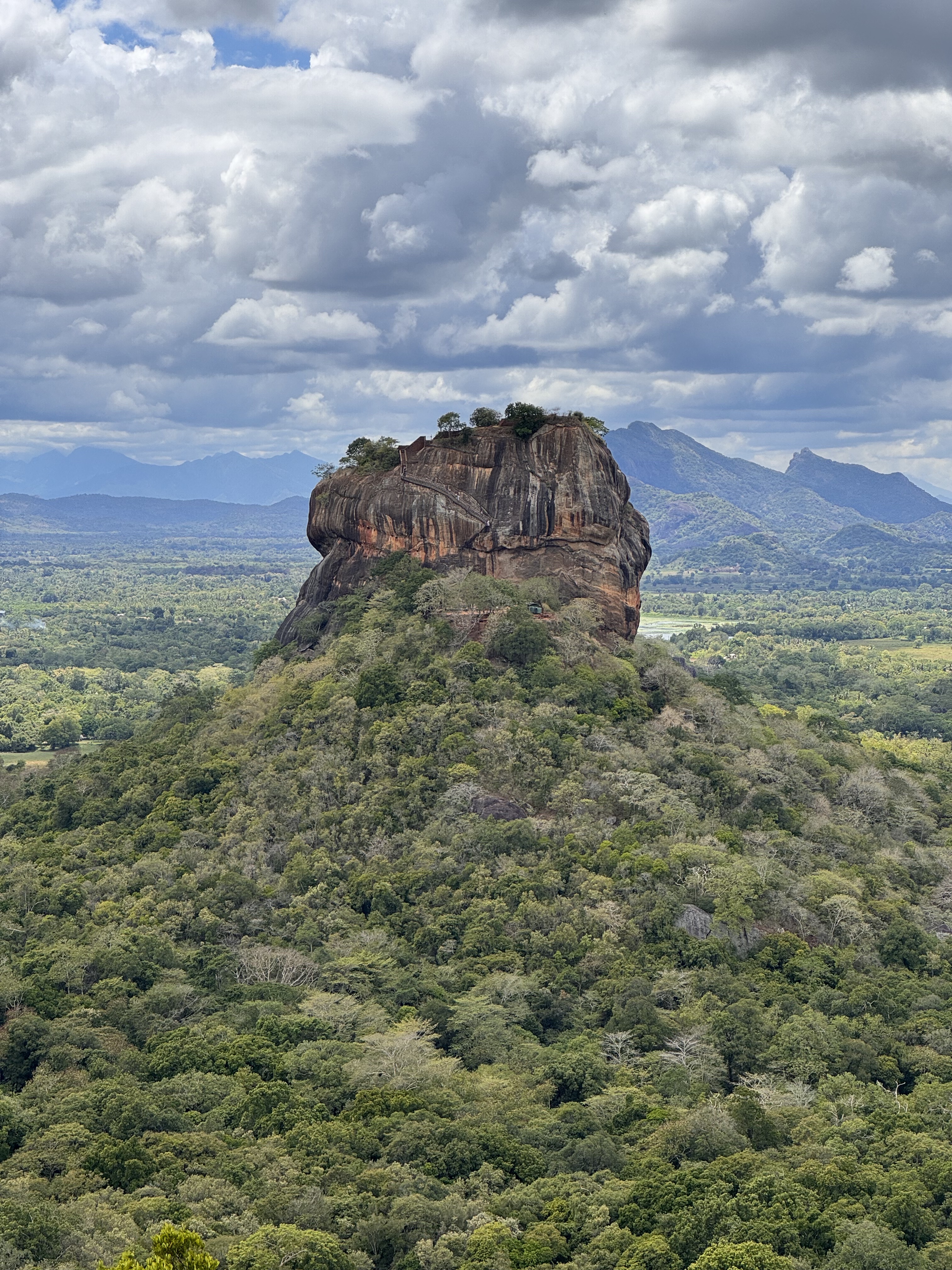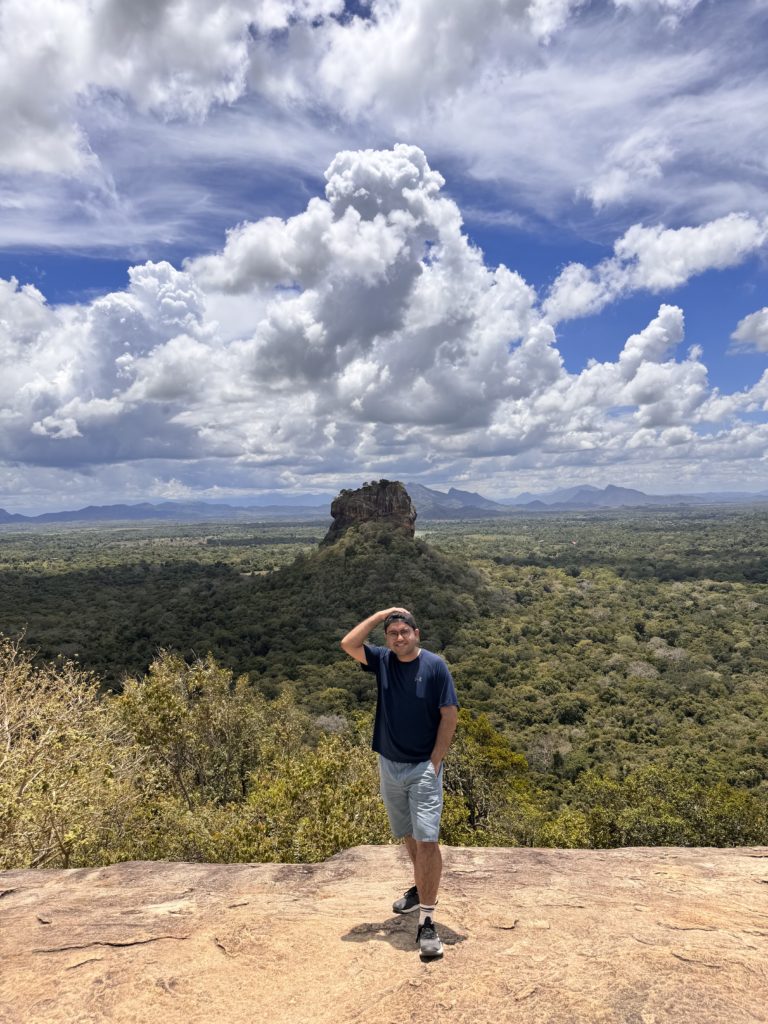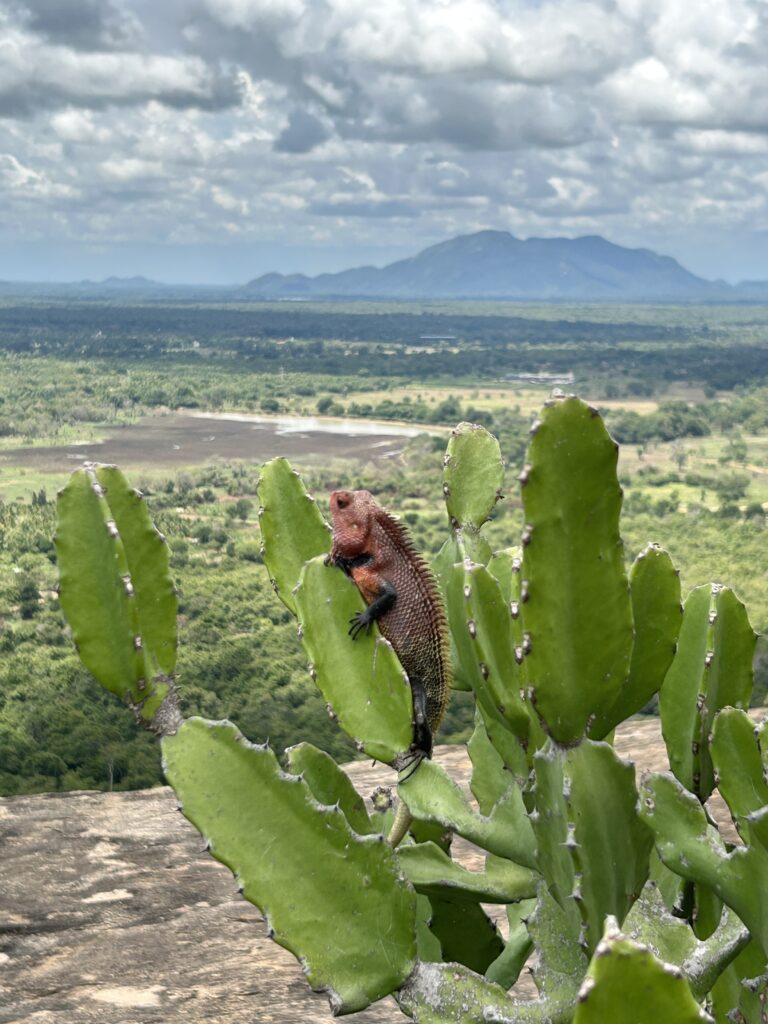Sigiriya Rock, Sri Lanka: The Ultimate Travel Guide
Nestled in the heart of the cultural triangle of Sri Lanka, Sigiriya Rock, often referred to as the Eighth Wonder of the World stands as a symbol of ancient ingenuity and architectural brilliance. This imposing rock fortress, a UNESCO World Heritage Site, draws adventurers and history enthusiasts alike to embark on a thrilling journey to its summit. In this ultimate guide, we will explore everything you need to know about hiking Sigiriya Rock, from its historical significance to practical tips and the best times to visit. So welcome to this blog on ‘Sigiriya Rock, Sri Lanka: The Ultimate Travel Guide’.

Historical Significance of Sigiriya:
Before embarking on the Sigiriya Rock hike, understanding its historical context is crucial. In the 5th century, King Kashyapa chose this massive rock as the foundation for his palace and fortress. Fearing retribution from his half-brother Moggallana, Kashyapa built Sigiriya to be an impregnable fortress, a testament to ancient engineering and strategic planning. The site also served as the capital of Sri Lanka for a brief period.
The Ultimate Guide to Hiking Sigiriya Rock:
1. Entrance Fee and Ticket Office: To begin your adventure, head to the Sigiriya ticket office. Be prepared to pay the entrance fee, which contributes to the conservation and maintenance of this historical treasure. The ticket includes access to the rock, the water gardens, and the Sigiriya Museum. It cost 30 USD/£23 pounds per person at the time we went to enter the site.
2. Best Time to Visit: While Sigiriya is open year-round, the best time to embark on the hike is during the dry season (from May to September) when the weather is more predictable. Early morning or late afternoon hikes are recommended to avoid the scorching midday sun.
3. Hiking Preparations: Ensure you have comfortable footwear, sun protection, and sufficient water. The climb involves steep staircases and narrow pathways, making it essential to be physically prepared. The hike is graded as moderate, making it accessible to a wide range of fitness levels.
4. Sigiriya Lion Rock: The iconic Sigiriya Lion Rock, with its colossal lion’s paws and head at the entrance, sets the tone for the ascent. The Lion Rock hike takes you through boulder gardens, rock walls, and ancient palace ruins, providing a glimpse into the historical significance of the site.
5. Mirror Wall and Frescoes: As you ascend, you’ll encounter the Mirror Wall, a polished surface that once reflected the beauty of the surroundings. The wall is adorned with ancient inscriptions, offering a unique connection to the past. Further up, the vibrant frescoes of the Cloud Maidens captivate visitors with their artistic beauty.
6. Top of Sigiriya Rock Fortress: Reaching the summit of Sigiriya Rock is a moment of triumph. The panoramic views of the surrounding plains, the ancient city of Sigiriya, and the distant Pidurangala Rock are awe-inspiring. Take your time to explore the ruins of the palace and marvel at the sheer audacity of its construction.
7. Pidurangala Rock: For those seeking an additional adventure, consider a hike to Pidurangala Rock, located nearby. Pidurangala offers a unique perspective of Sigiriya and is a popular spot for sunrise or sunset. The ascent is less crowded, providing a tranquil alternative to the bustling Sigiriya Rock.
8. Nature and Wildlife: Sigiriya is not only a historical site but also a haven for nature lovers. The surrounding area is a natural habitat for diverse flora and fauna. Keep an eye out for local birds, monkeys, and other wildlife as you traverse the trails. Again, just keep food and snacks out of site, but generally we did not have issues with any wildlife around the area whilst climbing lions rock.
9. Sigiriya Museum: After the descent, a visit to the Sigiriya Museum adds depth to your experience. The museum houses artifacts and exhibits that provide context to the historical and cultural significance of Sigiriya.
Practical Tips and Travel Hacks:
1. Tuk-Tuk Transportation: Arriving at Sigiriya is convenient via a tuk-tuk, a popular mode of transportation in Sri Lanka. Negotiate the fare with the driver beforehand to ensure a fair deal.
2. Hotel Sigiriya and Accommodations: Consider staying at Hotel Sigiriya for its proximity to the rock. The hotel offers private rooms, ensuring a comfortable stay after an exhilarating day of hiking.
3. Local Guides and Tuk-Tuk Drivers: While not mandatory, hiring a local guide can enhance your understanding of Sigiriya’s history. Tuk-tuk drivers may also serve as guides, offering insights into the local culture and traditions.
4. Affording Enough Time: Plan your visit with enough time to fully appreciate Sigiriya. The hike, exploration, and museum visit can take several hours, so avoid rushing through the experience.
5. Rainy Season Considerations: If you visit during the rainy season (October to April), be prepared for slippery pathways and muddy trails. It’s advisable to check the weather forecast and plan your hike accordingly.
6. Affiliate Links and Travel Tips: For budget-conscious travellers, consider affiliate links and travel tips from blogs like “Dream Big, Travel Far” to find cost-effective accommodations and discover unique travel hacks.
Exploring Surrounding Areas:
1. Dambulla Cave Temples: Extend your cultural exploration by visiting the Dambulla Cave Temples, a short distance from Sigiriya. These ancient caves house stunning Buddhist murals and statues dating back to the 14th century.
2. Minneriya National Park: Nature enthusiasts can embark on a day trip to Minneriya National Park, renowned for its elephant gatherings during the dry season. Safaris offer an opportunity to witness these majestic creatures in their natural habitat.
3. Pidurangala Royal Cave Temple: Adjacent to Pidurangala Rock is the Pidurangala Royal Cave Temple. Explore this lesser-known gem for a tranquil encounter with ancient Buddhist cave art.
Pidurangala Rock: An Amazing Alternative Hike With A View of Sigiriya Rock!
An enchanting alternative to its more famous neighbour, Sigiriya. Offering a unique perspective of the ancient fortress and the surrounding landscape, the hike to the summit of Pidurangala Rock promises an adventure filled with stunning vistas and cultural discoveries. In this blog post, we’ll explore the essence of hiking Pidurangala Rock, from the trailhead to the breathtaking views awaiting those who reach the top.

The Essence of Pidurangala Rock, Sri Lanka:
1. A Different Perspective: While Sigiriya Rock is renowned for its historical significance, Pidurangala Rock provides a different angle – a vantage point that allows you to gaze upon Sigiriya in all its glory. The hike to Pidurangala offers a fresh and unspoiled perspective of the iconic Sigiriya Lion Rock, making it a must-do for travellers seeking a unique experience.
2. Historical and Spiritual Significance: Pidurangala is not merely a rocky outcrop; it has its own historical and spiritual significance. At the summit, you’ll find an ancient Buddhist cave temple, believed to have been established by King Kashyapa’s renegade Buddhist monks. The site exudes a tranquil atmosphere, offering visitors a chance to connect with the spiritual heritage of Sri Lanka.
The Pidurangala Rock Hike:
1. Trailhead and Entrance: The Pidurangala Rock hike begins near Sigiriya, and the trailhead is easily accessible. The entrance fee is considerably lower than Sigiriya’s, making it an attractive option for budget-conscious travellers. Follow the signs and venture into the wilderness, ready to embrace the natural beauty that unfolds along the way.
2. The Ascent: The trail winds its way through lush vegetation and rocky terrain, requiring a moderate level of fitness. Sturdy footwear is recommended as the path may be uneven and steep in sections. As you ascend, keep an eye out for diverse flora and fauna, adding an extra layer of enjoyment to your journey.
3. The Giant Buddha: Midway through the hike, you’ll encounter a massive reclining Buddha statue carved into the rock. This unexpected and awe-inspiring sight serves as a prelude to the breathtaking panorama awaiting you at the summit.
4. The Final Ascent: The last stretch of the hike involves a climb up a set of steep stairs leading to the pinnacle of Pidurangala Rock. There is a small bit of rock climbing you have to do towards the end (just some difficulty but nothing horrendous for those like me who don’t really hike). The effort is rewarded tenfold as the expansive views of the surrounding landscape and Sigiriya Rock come into view.
Breathtaking Views and Photo Opportunities:
1. Sigiriya Lion Rock: Reaching the summit of Pidurangala Rock unveils a stunning panorama with Sigiriya Lion Rock as the focal point. The contrast between the two rocks – one ancient and iconic, the other rugged and natural – creates a visual spectacle that is truly memorable.
2. Surrounding Plains and Distant Hills: The 360-degree views from Pidurangala Rock encompass the lush plains, distant hills, and the meandering waterways. The ever-changing play of light and shadow across the landscape creates a canvas that is a photographer’s dream.

3. Sunrise and Sunset: For those who time their hike right, witnessing the sunrise or sunset from Pidurangala Rock is an experience beyond words. The sky painted in hues of orange and pink, casting a warm glow over the ancient ruins and natural surroundings, is a moment that etches itself into your memory.
Practical Tips for Hiking Pidurangala Rock:
1. Entrance Fee and Opening Hours: Check the current entrance fee and opening hours to ensure you plan your hike accordingly. Pidurangala is generally open from early morning until early evening. The entrance fee is much cheaper than Sigiriya Rock entrance at 3 USD/ £2.30 per person.
2. Footwear and Sun Protection: Wear comfortable hiking shoes with good grip, especially for the final ascent. Sun protection, including a hat and sunscreen, is essential as the sun can be intense, especially during midday.
3. Water and Snacks: Carry sufficient water to stay hydrated during the hike. Bringing some snacks is advisable, allowing you to refuel and enjoy a moment of relaxation at the summit.
4. Respect the Sacred Site: As Pidurangala Rock is home to a Buddhist cave temple, be respectful of the sacred site. Dress modestly, avoid loud conversations, and follow any guidelines provided by the local authorities.
5. Timing Your Visit: Consider timing your hike to coincide with sunrise or sunset for an added dose of magic. Keep in mind that these times offer not only stunning views but also cooler temperatures.
Exploring Beyond Pidurangala:
1. Pidurangala Royal Cave Temple: Take some time to explore the ancient Buddhist cave temple at the summit of Pidurangala Rock. The tranquillity of the temple adds a spiritual dimension to your adventure.
2. Sigiriya and Surrounding Attractions: Since Pidurangala is in close proximity to Sigiriya, consider exploring both sites during your visit. Sigiriya offers its own historical treasures, including the water gardens, mirror walls, and frescoes.
Hiking Sigiriya Rock is not merely a physical endeavour; it’s a journey through time and culture. The ancient fortress, with its mirror wall, water gardens, and panoramic views, stands as a testament to human ingenuity. As you ascend to the top, the surrounding area unfolds, revealing the beauty of Sri Lanka’s cultural triangle. Whether you’re a history buff, nature lover, or adventure seeker, Sigiriya Rock promises an experience that transcends the ordinary – a must-visit destination in the heart of Sri Lanka.
If you enjoyed reading this post on ‘Sigiriya Rock, Sri Lanka: The Ultimate Travel Guide’. For further info, check out my other blogs at https://www.mymemoriesabroad.com/category/blog/ or head to my Pinterest profile to have a look at travel photos, which will hopefully inspire you to book your holiday to remember at https://www.pinterest.co.uk/mymemoriesabroad/. I hope this blog was helpful and hope your journey to Sri Lanka is an unforgettable memory you get to experience. Safe journey!
